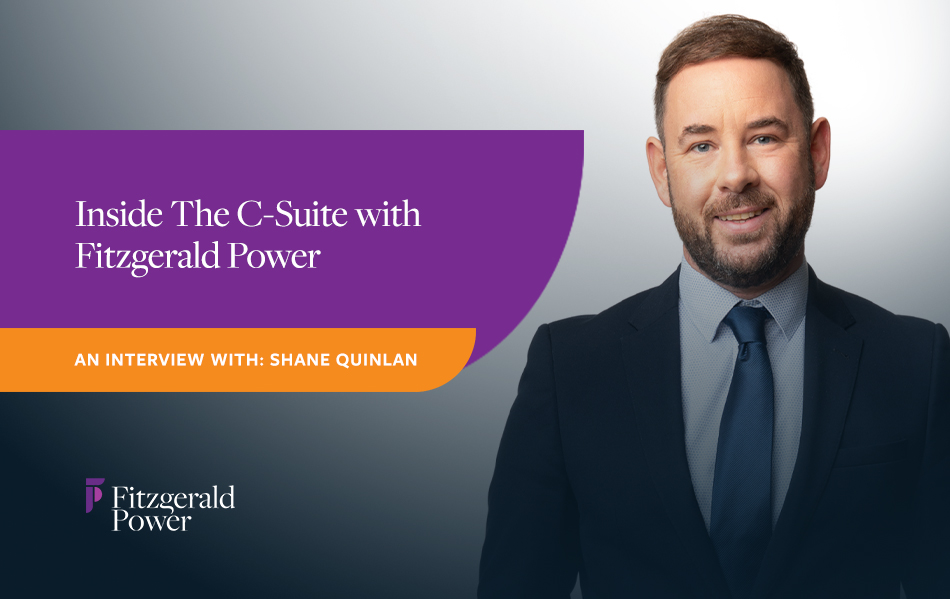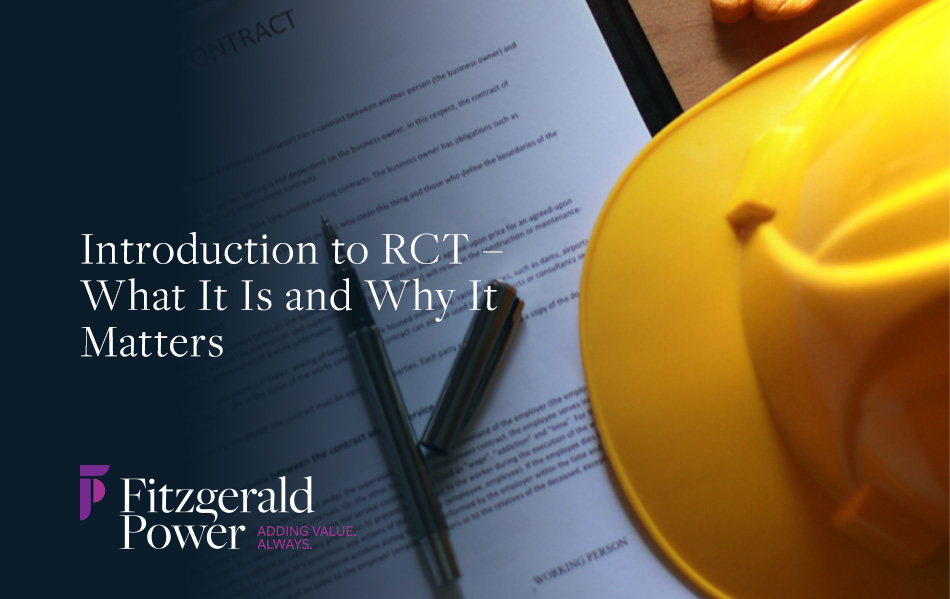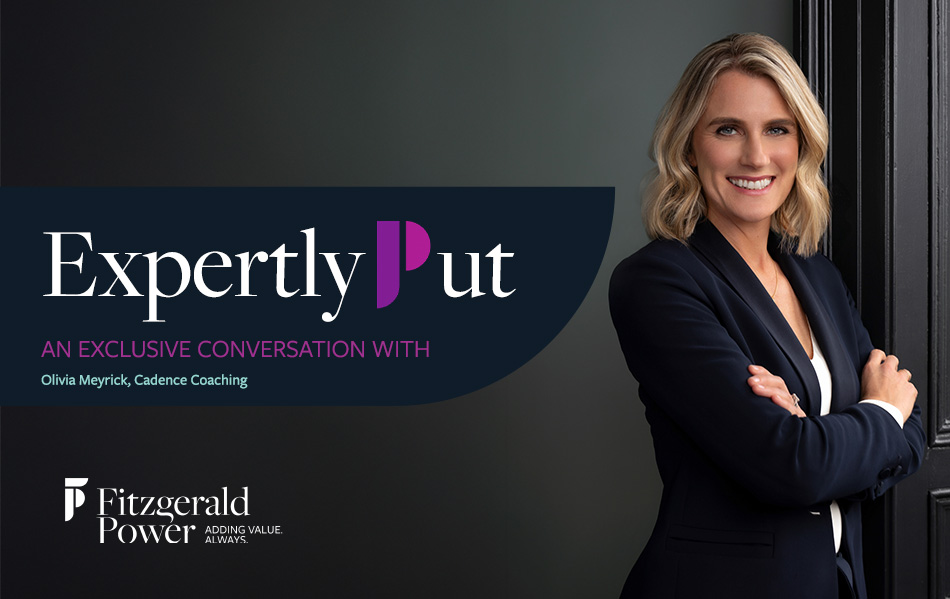“People talk about a housing crisis, but it’s more appropriate at this stage to call it an emergency.”
In Fitzgerald Power’s interview series, we’re speaking to people with different perspectives who feel they can offer more to the workplace, from the water cooler all the way up to C-Suite.
As most will already be aware, the housing market stands at a pivotal point as 2025 rolls on. Chief among the key forces at play? Remote work, fluctuating interest rates, housing supply challenges and evolving consumer demand — largely driven by millennials; the average Irish homebuyer was 35.3 years old in 2023 — will continue to reshape the real estate landscape. Recent research published by MyHome.ie suggests that the average mortgage loan for a house purchase in Ireland exceeded €300,000 for the first time last year, coming in at €308,200 in the third quarter of 2024. In October, the report noted that the average mortgage approval rose to a new high of €321,000, up 8% on the year. In addition, house prices were 8.7% higher in December than in the previous year, according to the Central Statistics Office.
Shane Quinlan, MD of Sherry FitzGerald’s Financial Services business, spends a lot of time thinking about first-time buyers and the economic landscape they find themselves in. “If you look at the last few years in Ireland, the post-COVID economy has been very resilient,” he says. “Particularly if you look at the domestic economy. GDP is typically the key measure of economic growth but that’s skewed by the strength of the multinational sector. If you strip that out, modified domestic demand has been growing steadily for the last four years, and that’s been driven by real income growth and Government investment in the economy. We’re in an environment of pretty much full employment, and there has been increased investment in domestic sectors such as housing, even though it hasn’t been at the pace required. If we look to 2025, the ESRI are forecasting 4% to 4.5% growth in both domestic demand and GDP this year. Why is that? Inflation is under control, interest rates are coming down, and real incomes will continue to grow. So the outlook for the next 12 to 24 months, certainly from a domestic point of view, looks positive. There are, of course, some black clouds on the horizon: Trump’s proposed economic policies, the potential for a global trade war, ongoing geopolitical instability, and potential tariff increases for the EU… but overall, the outlook is positive. We have a strong labour market, and consumer confidence is improving.
Quinlan grew up in Waterford before transferring to University College Cork in 1997 to complete an Economics and Computer Science degree. He moved to London for a period following his Master’s in 2001, only to return to Dublin following the dot com bust. “At that stage, it was just after 9/11 and the technology market crash, and it was very hard to start a career over there straight out of college without any previous experience.” Over the next 10 years, he pivoted between the public and private sectors, initially working as an Economist for the Irish Government, advising on everything from transport policy to trade policy to enterprise policy, before moving into strategy and commercial roles in Banking. In 2012, he took up residence in Copenhagen when his employer at the time, Danske Bank, withdrew operations from Ireland and redeployed him to their global headquarters. There, he was Danske’s Global Head of Strategy, responsible for all the Bank’s strategy functions across the Nordics. “It was probably the most enjoyable period of my career,” he smiles via Zoom from his office in Dublin. “Exploring a new culture, building up international contacts and getting to work in cities all over Scandinavia, such as Helsinki and Stockholm. Our two kids at the time were toddlers when we moved over, and our youngest was born in Copenhagen in 2014. We came home in 2015 when it came time to get them into school, that’s when I started at Bank of Ireland.” Quinlan worked at Ireland’s largest bank for six years, where he headed up their Premier Banking, Mortgages and Financial Wellbeing departments. In 2021, he was approached to take up his current position with Ireland’s leading Estate Agent. “I had just turned 40, and I was presented with a really exciting opportunity in one of Ireland’s most successful companies,” he says. “Sherry FitzGerald is renowned for property but had a financial brokerage business for over 20 years, which was ancillary within the overall Group with a limited mandate to grow. That has changed in recent years with our business doubling both in terms of staff and revenues since 2022, to where we are now one of Ireland’s biggest mortgage brokers.” That growth is, of course, despite significant housing challenges. “We had a report released this week on the residential housing market, which showed housing stock levels in 2024 had fallen to a historic low,” he says. “People talk about the housing crisis, but it’s actually probably more appropriate at this stage to call it a housing emergency. Economic and demographic developments over the last 15 years have led to a chronic lack of housing supply across the country. Marian Finnegan, MD of our Residential and Advisory business, often presents a really interesting graphic of housing supply over the last 50 years. If you look at the 1970s, 1980s, and early 1990s, we consistently built between 20,000 and 30,000 houses a year– that was enough to satisfy the demand at the time. Then, in the 2000s, significant economic growth increased prosperity in the country, and there was easier availability of credit, particularly international credit, as we had a lot more banks lending in Ireland – by 2006, we were building over 90,000 houses. That level of supply was never going to be sustainable in a country of 4.3 million people at the time, and we saw what happened after the global financial crisis that followed. After that, from 2010 to 2020, we had 10 years where fewer than 20,000 houses were being built each year. While this was happening, the population was exploding, from 4.5 million to an estimated 5.3 million today. So, today, we’re currently in a situation where there’s double the demand for the supply of housing that’s available. We need 60,000 homes built annually, but last year, we built 30,000, and the population will continue to grow. The new Government has committed to delivering 300,000 new homes by 2030. That is going to be a real challenge as it will require a significant increase in private and international investment compared to what we are seeing today.”
So, how does that translate to the mortgage market? “Well, the strength of the mortgage market is dictated by the housing market’s strength. Back in the heady days of 2006, when we were building 90,000 new homes, we had 12 or 13 retail banks in the country that were lending between €30 – €40 billion that year. That collapsed to as low as €2 billion in 2012 as non-domestic banks deserted the market during the recession, but has climbed steadily back to €13-14 billion in recent years. New lenders such as Avant Money, MoCo and Nua Money have entered the Irish mortgage market to challenge the domestic banks, and almost 50% of mortgage lending today originates through brokers like ourselves. Revolut is also expected to commence mortgage lending in Ireland later in the year, which will add more competition and choice for consumers. A ramp-up in much-needed housing supply over the coming years will translate to higher levels of mortgage lending in Ireland.”
Outside of mortgages, Sherry FitzGerald Financial Services also supports its clients with financial planning. This is a phrase that often gets bandied about, with many overlooking its greater significance. As the needs of the population change, so should our financial plans, Quinlan insists. “The Irish population is getting older,” he says. “We’re getting healthier as a nation, too – the days of retiring at 60 and having a nice pension to do you for the rest of your life has changed. People are living longer and working into their 70s; that wasn’t the case 20 years ago. So long-term financial planning is key to ensuring you have sufficient financial security in retirement. The other thing is that care costs may also be required in older age, which can bring with it significant expenses. And look, the way I see it, financial planning all comes down to having peace of mind. It’s all about mitigating financial stress the closer you get to retirement and, indeed, once you retire. The Government is bringing in auto-enrollment later this year for the 800,000 people in the country who currently have no private pension in place, which will require them and their employers to put provisions in place for the future. That is a necessary scheme, which will hopefully work effectively for those who need it. Because, as I say, it’s all about providing financial security for those lucky enough to live for many years after they retire.”
For more information on Sherry FitzGerald and their research on the housing market, check out Shane’s LinkedIn here.





